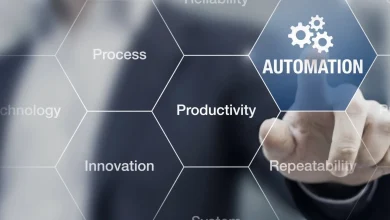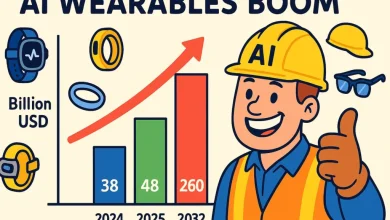
In today’s wave of digital transformation, businesses have moved far beyond simply “scanning paper documents into images.” The true goal is to make the information within those documents readable, understandable, and actionable. This is where Artificial Intelligence (AI) revolutionizes document digitization—not only transforming how we manage files, but also redefining the entire information processing workflow.
According to an IDC report, organizations worldwide waste an estimated 20%–30% of their time each year searching for information, equivalent to a full workday lost per employee every week. AI-powered document digitization systems can cut this time by over 70%, representing not just a boost in efficiency but a significant leap in digital productivity.
From Scanning to Understanding: The Core Evolution of Document Digitization
Traditional scanners were designed for one simple task — converting paper documents into images saved in formats like JPEG, PNG, or PDF. While this method is fast and straightforward, it comes with a major limitation: the scanned file is essentially just an image. It cannot recognize, search, or edit the text or data within.
Thanks to advances in Artificial Intelligence, these limitations are quickly disappearing.
Modern smart scanners are no longer mere “photo capture devices.” Equipped with OCR (Optical Character Recognition), NLP (Natural Language Processing), and AI-powered image enhancement algorithms, they can now “read” and interpret documents much like humans do—transforming static paper records into dynamic, searchable, and actionable digital assets.
AI Empowerment: The Three Core Technologies Driving Digital Transformation
- OCR (Optical Character Recognition)
OCR lies at the heart of document digitization. By training AI models to recognize printed or handwritten text, it converts content from scanned images into machine-readable data.
Today’s OCR systems boast an accuracy rate exceeding 98% and support a wide range of languages. For instance, CZUR smart scanners feature a built-in OCR engine capable of recognizing 180+ languages, including mixed Chinese-English text, special symbols, and complex table layouts. - NLP (Natural Language Processing)
Extracting text through OCR is only the first step — the real breakthrough comes when AI can understand that text.
Through NLP algorithms, systems can analyze document structures and context — for example, identifying dates, amounts, and invoice numbers in receipts, or highlighting key clauses in contracts.
This turns documents from passive storage files into dynamic, actionable sources of business data. - AI-Powered Image Enhancement and Correction
Modern smart scanners are equipped with AI vision algorithms that automatically remove shadows, flatten curved pages, and repair creased or folded surfaces.
When scanning books, for example, the AI can detect the curvature of the spine and automatically produce a perfectly flat, distortion-free image — as if it were captured on a flatbed scanner.
This dramatically reduces the need for manual post-processing, making it especially valuable for bulk scanning tasks and large-scale document digitization projects.
CZUR Smart Scanner: A Hybrid Solution for Intelligent Digitization
Among today’s scanning devices, the CZUR Smart Scanner stands out with its powerful combination of traditional scanning and AI-driven digitization. It not only produces high-quality image copies but also utilizes built-in OCR and advanced AI algorithms to automatically recognize, process, and structure text data.
Built-in OCR Engine
Powered by ABBYY’s industry-leading OCR technology, the scanner supports over 180 languages and can convert scanned images into searchable PDFs or editable Word and Excel files.
This transforms static “images” into actionable digital data, showcasing the perfect blend of digitization and intelligent recognition.
Curve Flattening Technology™
Equipped with a laser sensor array, the device intelligently detects the shape and curvature of book pages or bound materials during scanning, then automatically flattens the image to produce distortion-free results.
This smart correction feature ensures exceptional scan quality while greatly reducing the need for manual post-editing.
Automated and Intelligent Scanning Workflow
- Auto-Scanning: Detects page-turning motions and automatically triggers the next scan.
- Auto Finger Removal: Identifies and removes fingers or other obstructions from the scanned image.
- Auto Page Splitting: Automatically separates pages during book scanning for greater convenience.
With these intelligent automation features, CZUR scanners significantly streamline the scanning process — reducing manual effort, increasing productivity, and enabling seamless large-scale digitization.
Applications of AI-Powered Document Digitization
- Business and Finance
AI-driven digitization can automatically identify key fields in invoices and bills—such as amounts, dates, and account numbers—and input them directly into accounting systems.
Studies show that AI-based invoice recognition systems can reduce data entry errors by over 90% and cut processing time by half.
- Education and Research
Universities and research institutions can quickly digitize textbooks, lecture notes, manuscripts, and research materials. Combined with keyword search systems, users can locate specific content within seconds. - Healthcare and Government
In healthcare, AI digitization helps hospitals build electronic medical record (EMR) systems that automatically categorize patient information while maintaining privacy and data security.
Government agencies use OCR- and AI-powered archiving systems to organize historical records, enabling long-term preservation and intelligent retrieval of documents. - Home and Personal Use
Individual users can easily scan receipts, certificates, tax documents, and other personal records, store them securely in the cloud, and search for them instantly—eliminating the worry of paper clutter or document loss.
The Core Value of AI-Powered Document Digitization
Document digitization is far more than just a step toward a “paperless office” — it represents the liberation of information productivity.
By making every document intelligent and actionable, AI transforms static records into dynamic assets that truly drive business growth. Its key advantages include:
- Time Efficiency
AI dramatically accelerates information retrieval — improving search speed by more than 10× and saving employees an average of 20% of their working hours. - Data Accuracy
Automated recognition and data entry minimize human error, ensuring consistent and reliable results across operations. - Security and Traceability
With access controls, activity logs, and cloud-based encryption, AI-powered systems safeguard sensitive information while maintaining full auditability. - Seamless Integration
Digital documents can be directly imported into ERP, CRM, and other enterprise systems, creating an efficient, closed-loop workflow that connects data and decision-making.
Together, these benefits make AI-driven digitization an indispensable pillar of modern enterprise information management and digital transformation.
The Future of OCR and Document Processing
The future of Optical Character Recognition (OCR) lies in Intelligent Document Processing (IDP).
While traditional OCR focuses primarily on text extraction, IDP takes it several steps further by integrating AI, machine learning, and natural language processing (NLP) to understand, classify, and extract structured data from unstructured documents.
As a result, businesses are moving toward real-time, API-driven platforms that deliver higher accuracy, greater flexibility, and seamless scalability — enabling smarter, more automated document workflows.
How AI Is Transforming Document Automation
AI is reshaping document automation by moving it beyond rigid, rule-based processes toward intelligent, self-learning systems.
Instead of relying on fixed templates, modern AI-powered tools can recognize patterns, detect anomalies, and continuously improve their data extraction performance.
The result is faster processing, minimal manual intervention, and far greater reliability when dealing with complex or unstructured document types.
You may like to read: How to digitize your paper documents
Choosing a Future-Ready Document Processing Solution
Next-generation document automation tools should deliver far more than basic data extraction. When evaluating solutions, look for capabilities such as AI-enhanced accuracy, support for industry-specific document formats, no-code configuration, real-time API integration, and compliance-ready workflows.
Products like CZUR Smart Scanners, which combine intelligent automation with exceptional ease of use and reliability, are setting the standard for the future of document digitization and automation.
When Documents Begin to “Think” — The Ultimate Goal of Digital Transformation
The true essence of AI-powered document digitization isn’t to replace people, but to make information easier to understand, share, and apply.
By transforming stacks of paper into structured, intelligent data assets, AI unlocks the hidden value within every document.
Choosing the right smart scanner is more than a technical decision — it’s a step toward a new era of efficiency, intelligence, and innovation in the digital workplace.




